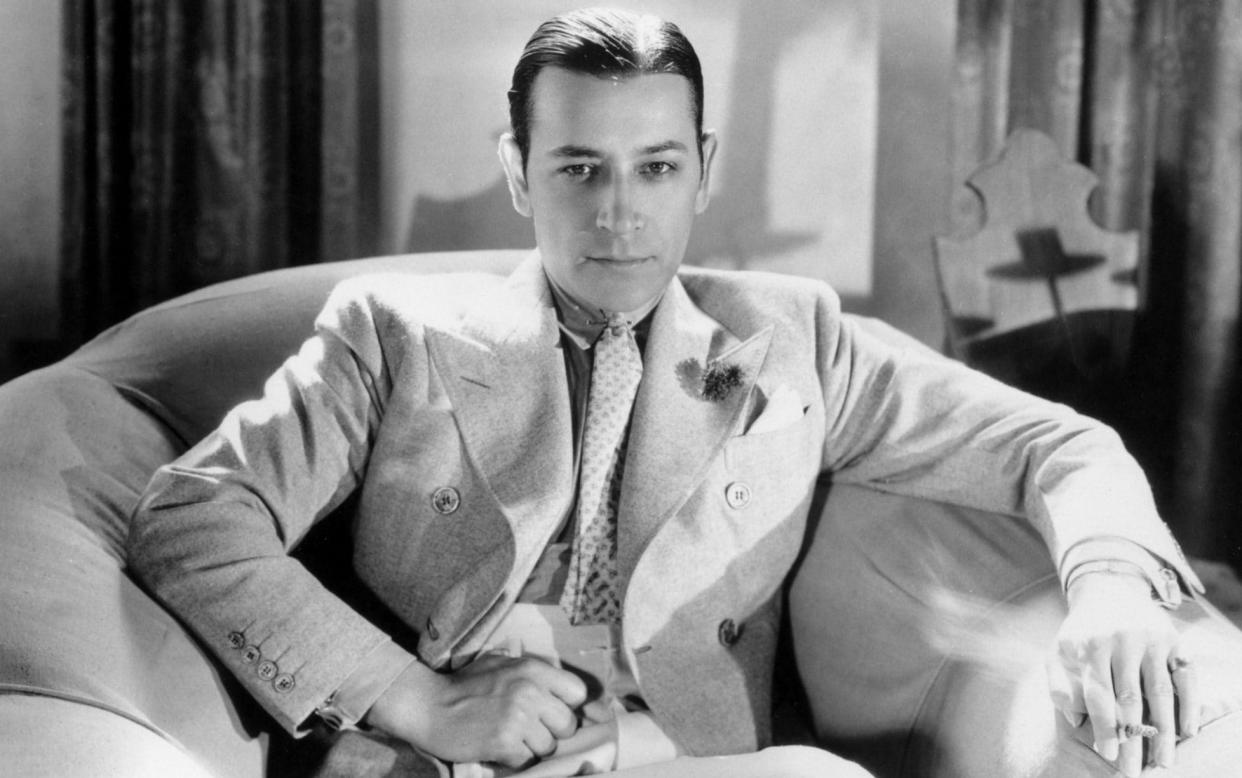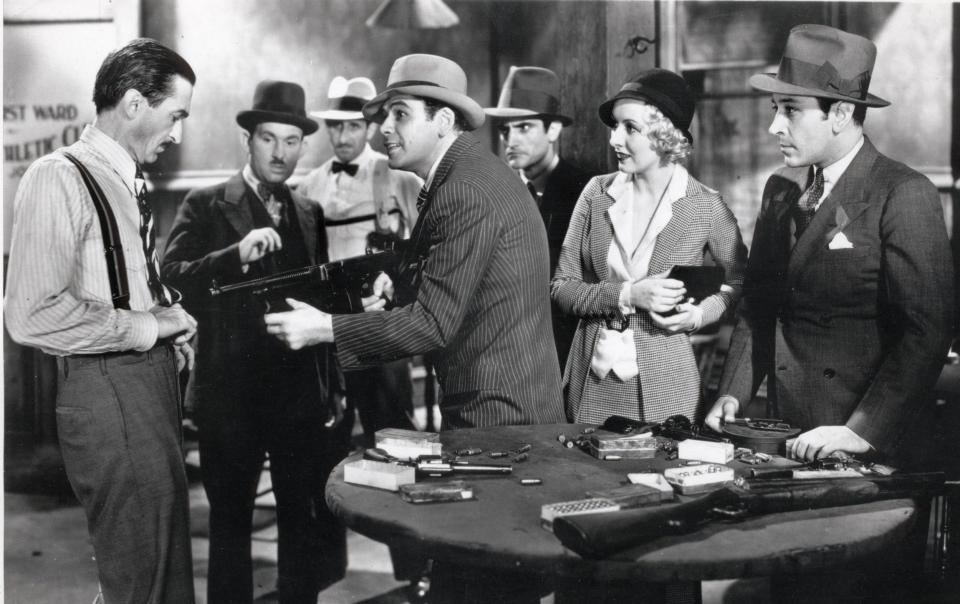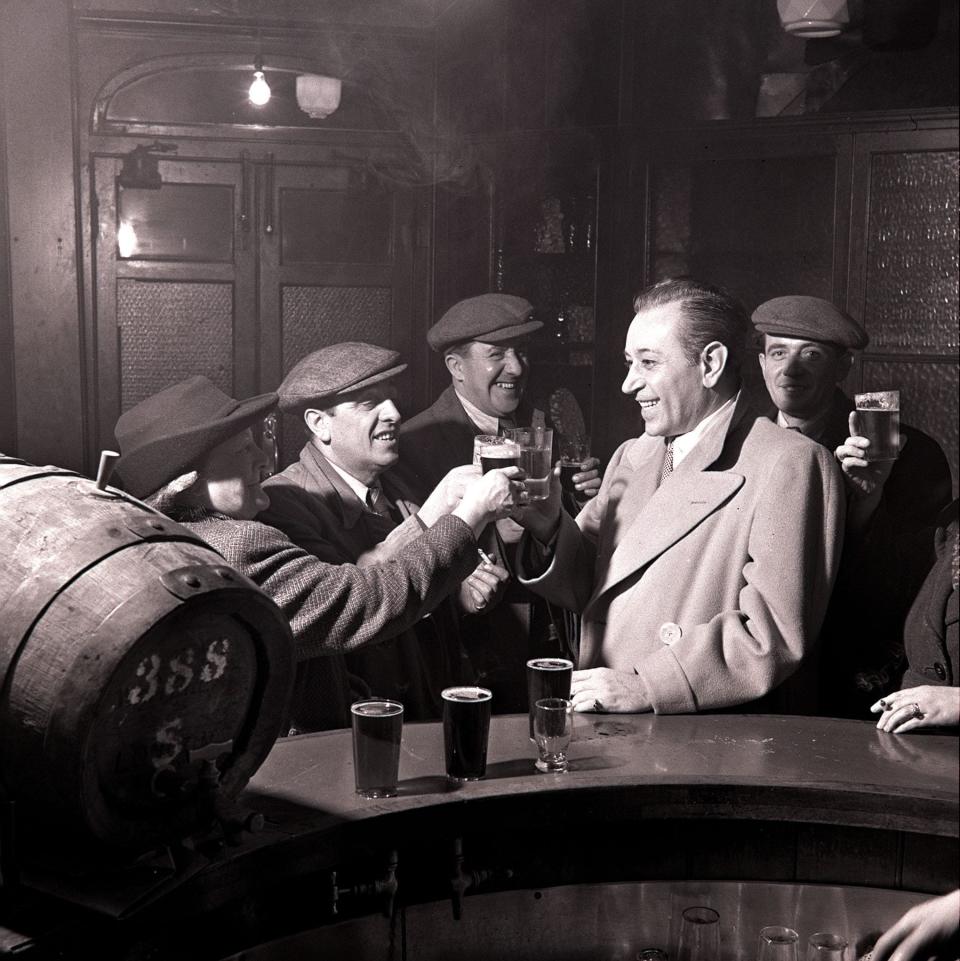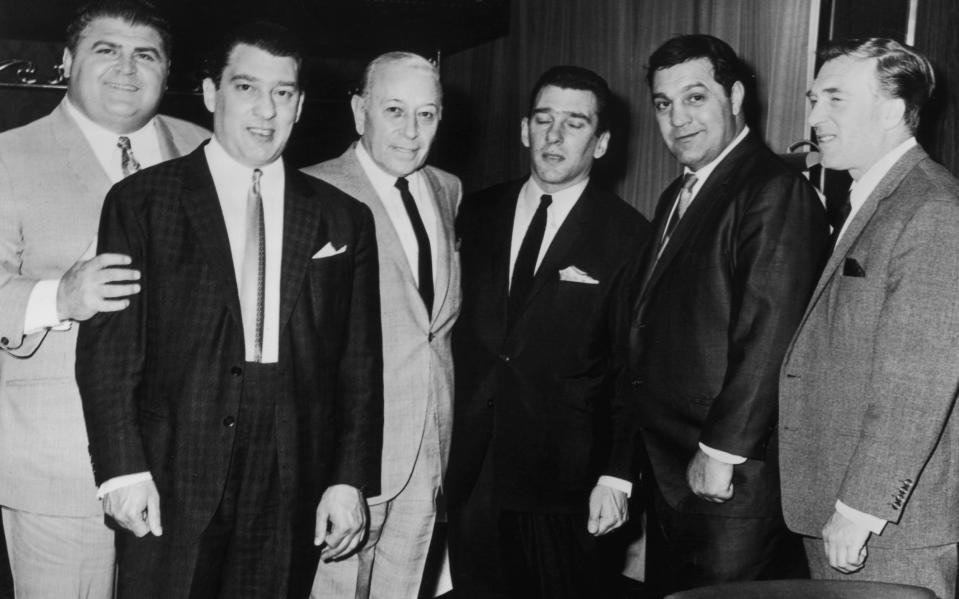‘I love England – that’s what hurts so much’: why movie mobster George Raft was banned from the UK

Many Hollywood stars visited the UK during the post-war years, but only one was barred from ever coming back. George Raft, one of the archetypal movie gangsters of the 1930s and the menacing Spats Columbo in the classic comedy Some Like It Hot, found himself unexpectedly banned from these shores in 1967, not long after he had been cast in what was effectively his real life dream role.
And, as had been the case throughout his career, it was the blurred lines between his onscreen persona and his offscreen connections which got him into trouble and brought to an end his long-standing love affair with this country.
It was an affair which spanned 40 years and several films – among them I’ll Get You For This, which is being given a rare screening at the National Film Theatre next week. The relationship even pre-dated his iconic breakthrough movie performance as the coin-tossing Rinaldo, sidekick to the psychotic Tony Camonte, in the gritty 1932 gangster flick Scarface.
Suave, slick, olive-skinned Raft – born George Ranft in the rough Hell’s Kitchen neighbourhood of New York in 1901, and originally a boxer – first came to London in the summer of 1927, having made a name for himself in the Mob-run speakeasies of his hometown as well as on Broadway. Billed as “the world’s fastest dancer”, he performed the hottest new crazes of the Jazz Age – the Charleston and the Black Bottom – “assisted,” as the advertisements said, “by a little black boy named Snowball”. They spent a week as the novelty act at the Victoria Palace, in a programme which also featured a troupe called Chaffer’s Wonder Midgets, before playing on the same bill as the popular British comedian Will Hay at The Alhambra.
Such was the reputation that had preceded him from New York that Raft was responsible for packing out the Florida Club, an upmarket nightclub in South Bruton Mews, off Berkeley Square. Among the notables dazzled by the dapper New Yorker’s dancing talent was the opera singer Tom Burke – who popped in with colleagues after performing at Covent Garden – and the then Prince of Wales to whom Raft claimed to have taught three dance steps.

By the time Raft next set foot on British soil, during the Second World War, his screen persona was well established: he was a sharp-suited movie hoodlum who invariably died a memorable death (Rinaldo in Scarface is shot between the toss and catch of his ubiquitous coin) at some point after revealing his prowess as a dancer.
He didn’t speak much in his films – because he was not much of an actor – but he had star quality and a sexual charisma and it was those factors which kept him in business, despite numerous well-documented run-ins with his studios, and despite his bad judgment when it came to his career. (The leading roles in High Sierra and The Maltese Falcon, which he turned down, made Humphrey Bogart a star.) Offscreen, he was known as a ladies’ man who kept himself to himself and was usually to be found at the race track or gambling.
For his wartime visit to Britain, in 1943, he once more packed his dancing shoes: he was here en route to joining fellow actors Humphrey Bogart and Frederic March in North Africa, where they were to entertain US servicemen. It was very much a flying visit (he flew in and out of Prestwick Airport in Ayrshire), but, on his way home, he managed to spend a few hours in Glasgow where he looked up the mother of one of his USO colleagues, Scots-born American singing star Ella Logan.
Ella Logan sent many of her Hollywood pals to her mother’s southside home for a taste of Scottish hospitality and home cooking. In 2003, Logan’s niece Dora recalled: “When George Raft visited, he said to my gran: ‘Don’t give me any food, Ma Allan, coz I just take tablets.’ But she was having none of it – tough guy or no tough guy.

“She told him: ‘You’ll just sit down there and take my good soup. I’ve spent all morning making it.’ So he did, and he phoned her up from Times Square in New York and said: ‘I wish I had a plate of your soup now, Ma Allan.’”
Despite being popular with the servicemen who saw him with the USO (and audiences who watched the 1944 movie, Follow the Boys, which captured the spirit of the shows staged by Hollywood stars in the theatres of war), Raft’s film career had stalled by the late 1940s, when his popularity took a hit as a result of articles in the press about his close ties to such real-life gangsters as British-born Owney Madden, for whom he worked as a runner back in his Hell’s Kitchen days, and Bugsy Siegel, now remembered as “the man who invented Las Vegas”, who was assassinated in 1947. So when offers came in from Europe, he was more than receptive.
I’ll Get You For This (AKA Lucky Nick Cain) was the first – and probably the best – of three British films he headlined. He starred as a tango-dancing American gambler trying to clear his name after he is framed for murder. It was filmed, in 1950, on location in San Remo in Italy, and then at Teddington Studios.
During the British shoot, Raft kept his customary low profile; his presence in the country only occasionally mentioned in the press – when he was spotted at boxing matches or at the race track. His only known public appearances during his 1950 visit, and the subsequent ones – when he came to make the similarly titled I’ll Get You and The Man From Cairo – were in Glasgow where he was twice invited to open new branches of a gents’ outfitters chain.

If his star power had waned in the States, it certainly hadn’t over here – if the scenes in central Glasgow in July 1952 were anything to go by. Back in the city for the second time in three years, to open another branch of Connell’s and collect a new set of bespoke suits, an astonished Raft was greeted by a couple of thousand fans, mostly female, who had waited two hours for his arrival from London.
Wednesday morning traffic came to a standstill and mounted police had to control the crowd. According to the local paper, “when his car arrived, hundreds of women, screaming and cheering, rushed forward to mob it.” Inside the shop, Raft was photographed sipping champagne with fellow actor Herbert Lom and Scottish entertainer Jimmy Logan, nephew of his USO friend Ella.
If he seemed to be getting his feet under the table on the British scene in the 1950s, the following decade saw him forging British connections on a whole new level. In 1965, in what now seems like a spectacularly unlikely showbusiness encounter, he was introduced by Jimmy Tarbuck on the TV show Sunday Night at the London Palladium. As slick and suave as ever, the white-haired sexagenarian – now a born-again icon thanks to his unforgettable turn as the nattily-attired mob chief Spats Columbo in 1959’s Some Like It Hot – performed a sexy, slowed-down, snake-hipped version of his Sweet Georgia Brown dance routine.
Around the same time, he was photographed in the company of Ronnie and Reggie Kray, the notorious London gangsters. The Krays’ henchman, John Dickson, said in 1986 that Raft had enjoyed going on pub crawls in the East End with the twins.

However, it was thanks to his underworld contacts on the other side of the Atlantic that Raft’s love affair with Britain came full circle when, in 1966, was given star billing at the Colony Club in Berkeley Square, round the corner from the first London nightclub in which he had worked.
His role was to play the host, and to lend his style to the gambling club – which was redecorated in his favourite colour scheme of deep red and gold. In return for lending his name, his image and his stardust to the establishment, he received a modest salary, a serviced, two-bedroom flat at the Belton Towers on Park Lane, a small share in the club’s profits, and a $35,000 maroon Rolls-Royce with a liveried chauffeur.
He took nothing to do with hiring or firing – or, he claimed, with the finances. It was, he later lamented, “a perfect set-up”. He took the part very seriously, and during the short period that he worked there, fell into a gentle routine of arriving each night at 8.30pm to check the kitchen, bar, entertainers and tables before sitting down to a steak dinner and checking over the reservation list to see if any celebrities were expected – so he could personally greet them. Among those who helped make it an “in” place were Elizabeth Taylor, Richard Burton, Jackie Kennedy and John Huston, one of the directors of the James Bond spoof Casino Royale (1967) in which Raft had a cameo role.

But his blissful British life came crashing to an abrupt end in February 1967 when, having returned to the States for Christmas and an appearance in the hit TV series Batman, he was preparing to fly back to London when he found out – from the press – that Home Secretary Roy Jenkins had barred him from re-entering the country, due to his links with organised crime. His continued presence, said the Home Office, would not be “conducive to the public good”.
Raft was inconsolable. “What have I done?” he asked the press. “They haven’t accused me of anything. They have just barred me from the country without charges, without a trial or anything. And just when I was about to start participating in the profits of the Colony. All I got was an apartment, the use of a car and a small salary until the investors were paid off. Now they have been but I won’t be there to collect. What have I got to do to clear myself? I lead a quiet life. I don’t get in any fights. If my offence is broads, then I plead guilty. That’s the one thing they can accuse me of.”
The decision was never fully explained, nor was it ever reversed – despite a further appeal for permission to visit Britain, to promote his authorised biography, in 1974. Raft, who had spent his life ricocheting between rags and riches, died six years later, while working as a greeter at the Beverly Hills booking office of a Las Vegas casino; a role which he modelled on his brief run front of house at the Colony Club. He never fully recovered from his London experience, because – as he told The Daily Telegraph – “I love England and I love the English people. That’s what hurts so much.”
I’ll Get You For This is showing at the NFT on Tuesday 21 February


